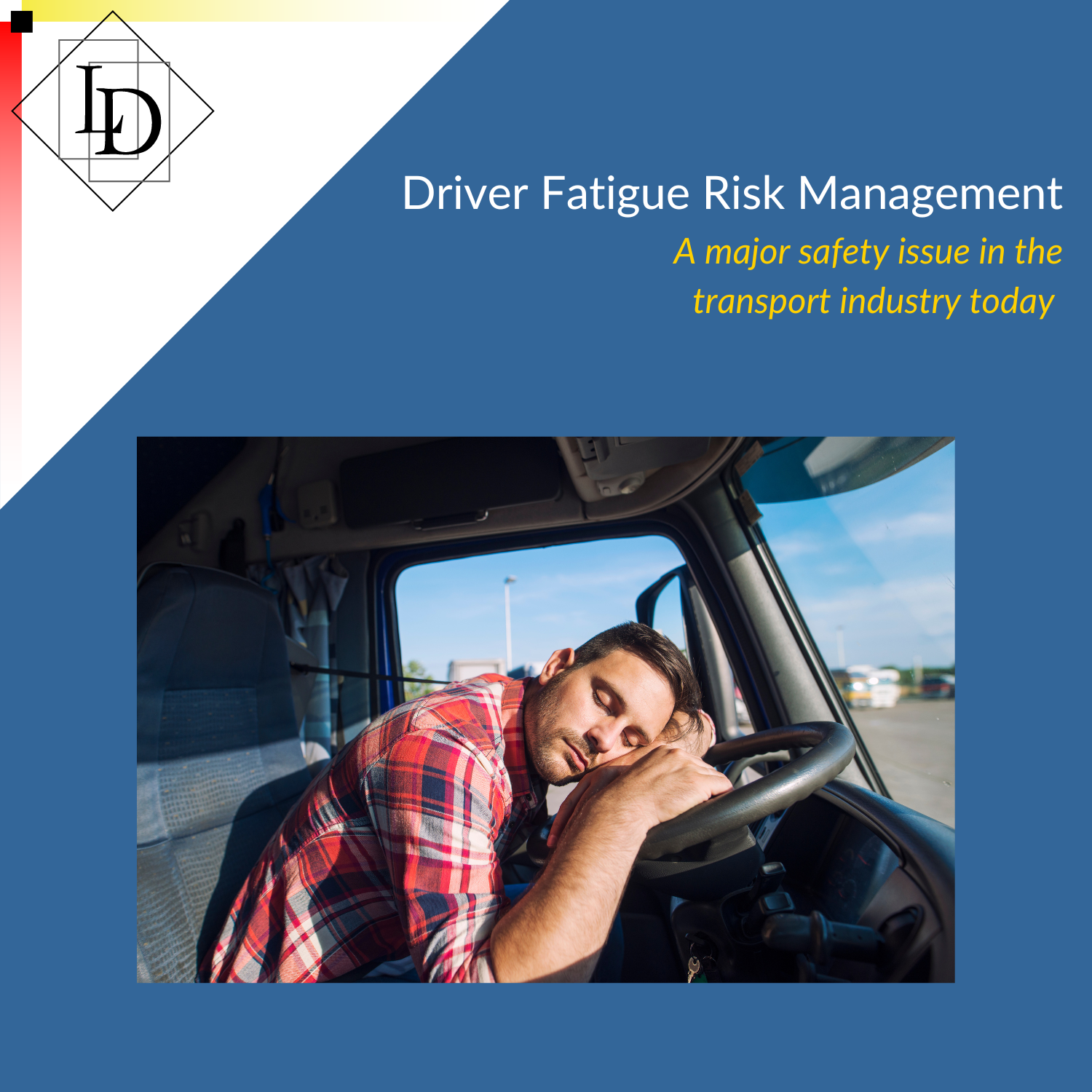
Driver Fatigue Risk Management
Driver fatigue risk management refers to the systematic approach taken by organizations or individuals to identify, assess, and mitigate the risks associated with driver fatigue. Fatigue is a significant factor in road accidents and incidents, as it can impair a driver's alertness, reaction time, and overall performance. Managing fatigue risk is crucial in industries where driving is a primary activity, such as transportation, logistics, and long-haul delivery.
According to the Transport Accident Commission, 20% of all fatal road crashes in Victoria involve driver fatigue, while estimates in Queensland (from the Centre for Accident Research and Road Safety, Queensland) are that sleepiness contributes to 20–30% of all deaths and severe injuries on the road. Fatigue is four times more likely to contribute to impairment than drugs or alcohol. (source: https://www.roadsafety.gov.au/action-plan/2018-2020/fatigue)
29.9 per cent of fatal articulated truck crashes in 1998 involved driver fatigue, which was almost twice the proportion of all fatal crashes involving fatigue (16.6 per cent) (source: https://www.infrastructure.gov.au/media-centre/publications/or-23-fatigue-related-crashes-analysis-fatigue-related-crashes-australian-roads-using-operational)
In Western Australia, Annually, around 20 lives are lost in crashes in which WA Police suspect fatigue is a factor. Fatigue-related road deaths and serious injuries are not restricted to rural and regional roads, nor are they restricted to people driving long distances. (source: https://www.wa.gov.au/organisation/road-safety-commission/fatigue)
Heavy Vehicle National Law (HVNL) contains provisions for offences related to fatigue management. Under the legislation, the core duty of a driver is that they must not drive a fatigue-regulated heavy vehicle on a road while impaired by fatigue.
HVNL requires that work time and rest time be measured in a specific way in order to prevent driver fatigue. Rest time is time that is not work time. There are HVNL rules that enforce rest breaks after certain periods of work time. HVNL sets out three work and rest options: standard hours, Basic Fatigue Management (BFM) and Advanced Fatigue Management (AFM).
Specific information must be recorded by an employer, accredited operator or driver, to comply with HVNL. The records must be kept for three years, in an easily-read format, and in a location accessible for an authorised officer.
Any driver who travels more than 100km from their home base, under any of the three work and rest options, must carry and complete a National Driver Work Diary to demonstrate compliance with HVNL and that fatigue is being managed. (source: https://www.armstronglegal.com.au/traffic-law/nsw/heavy-vehicle/driver-fatigue)
Driver fatigue risk management is a systematic approach to identify, assess, and mitigate the risks associated with driver fatigue. It involves:
- Identification: Recognizing factors contributing to fatigue, such as long hours and irregular schedules.
- Assessment: Evaluating the likelihood and severity of fatigue-related incidents using tools and models.
- Regulatory Compliance: Adhering to relevant regulations on driving hours and rest breaks.
- Education and Training: Providing drivers with strategies to maintain alertness and recognize signs of fatigue.
- Scheduling: Implementing schedules that allow for sufficient rest between driving shifts.
- Technology: Using fatigue monitoring systems to detect signs of fatigue and provide warnings.
- Cultural Support: Fostering a safety culture, encouraging open communication, and addressing fatigue concerns.
- Regular Review: Periodically reviewing and updating policies based on feedback and incident analysis.
Driver fatigue contributes to a percentage of fatal crashes globally, emphasizing the importance of comprehensive fatigue risk management for the safety of drivers and others on the road.
Logical Developments’ Compliance module is designed to help manage DFRM, as well as other non-conformance issues. The module can be integrated with ConNote and other modules to provide a cohesive, single point of truth for your systems. Contact us today to find out how you can make your better!